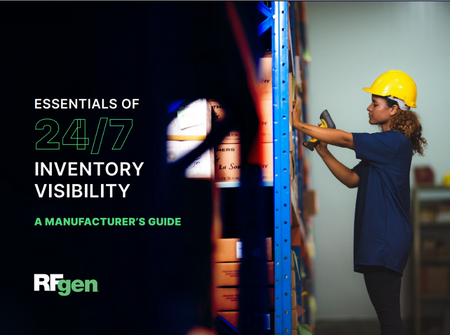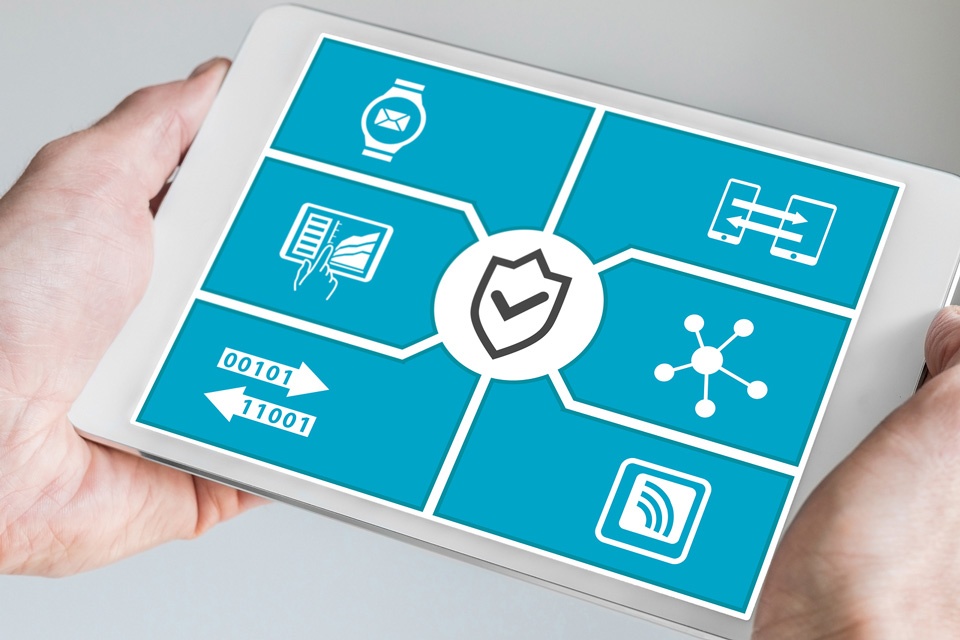Sustainable, Smart, and Lean: Navigating New Frontiers in Lean Supply Chain
- Supply Chain
- Sustainability

Achieving a lean supply chain is essential for success in today’s world. For manufacturers, the need is even more pressing.
Lean supply chain management focuses on eliminating waste to streamline operations and maximize value. Efficient and cost-effective production and distribution processes follow. This concept, rooted in lean manufacturing principles, has evolved significantly with technological advancements.
The integration of modern technology and sustainable practices has redefined traditional supply chain models, making them more responsive, adaptable, and environmentally conscious.
So what tools and strategies are reshaping supply chain management in an effort to become more lean and sustainable? Let’s find out.
What is a Lean Supply Chain?
Before jumping into new frontiers, let’s start with the basics: a lean supply chain definition.
A lean supply chain is a concept centered on maximizing efficiency and minimizing waste in the supply chain process. It’s particularly relevant for medium to large enterprises that manufacture products, where complexity and scale can lead to significant inefficiencies and waste if not managed effectively.
Key components of a lean supply chain (aka “Lean Concepts”) can include:
- Waste reduction of non-value-adding activities
- Continuous monitoring and improvement
- Forecasting based on a demand-driven approach
- Simplified, standardized business processes
- Strong relationships with suppliers
- Focus on maintaining the highest quality standards
- Just-In-Time (JIT) production methods
- Use of digital tools and technologies
Customer value encompasses all of the processes and people involved throughout the supply chain. The goal is to create a more agile, cost-effective, and customer-responsive supply chain. Implementing a lean supply chain requires a systemic change in mindset and operations. It often involves integrating digital transformation initiatives, such as mobile hardware and software applications, into traditional supply chain processes.

Maximizing Supply Chain Strategy: A 10-Step Guide
READ MORE »The Lean Manufacturing Supply Chain
Of all the stages in the supply chain, from concept to delivery, manufacturing stands to gain the most benefits by going lean. A lean manufacturing supply chain can create a domino effect, driving efficiencies throughout the rest of the supply chain.
Fortunately, supply chain technologies have demonstrated their ability to greatly accelerate the elimination of waste of excess costs. With the right technology in place, manufacturers can get ahead of the competition in a tight economic landscape.
Before production begins, organizations should make sure the product is designed for manufacturing. Take into account constraints and what kind of cost, time, and quality will need to be put into the system. With new software tools, product design and production can be more easily tied together by arming businesses with information to test every phase of the project.
Smart executives will look at collected data from this software and use it to proactively avoid waste. This is essential to creating a lean production supply chain.
Better technology will likely also mean automation, which should increase flexibility and allow for shorter production times. Technology can also play a critical role in avoiding downtime on the production line.

Manufacturer’s Guide: Essentials of 24/7 Inventory Visibility
Download NowThe Role of Technology in Lean Supply Chain
The integration of technology in supply chains has transformed how companies approach efficiency and productivity. Three key technological advancements are currently playing pivotal roles.
Mobile Inventory Solutions
One particularly robust technology enabling a lean supply chain is enterprise mobility. Mobile solutions like mobile barcoding use handheld hardware devices and mobile apps to automate manual tasks and extend ERP capabilities to point-of-work.
Lean methodologies necessitate lean inventory management. Because lean is so strict with inventory management, mobilizing these processes is a natural next step.
Once adopted, most manufacturers find mobile automation to be a cornerstone of their lean best practices due to the following benefits:
- Real-time inventory tracking
- Enhanced data accuracy
- Improved efficiency
- Higher worker productivity
- Better decision-making
- Increased flexibility and agility
- Support for JIT strategies and kanban

Solving Common Supply Chain Challenges with Mobile Software
READ MORE »Integration of Advanced Data Analytics
Advanced data analytics empower organizations to analyze large datasets for improved forecasting and decision-making. This capability allows for the identification of inefficiencies and optimization opportunities throughout the supply chain, leading to enhanced operational efficiency and cost savings.
Automated data capture is required to ensure that decisions are based on accurate information.
Impact of AI and Machine Learning
AI and machine learning algorithms are revolutionizing smart supply chain management by automating complex decision-making processes. These technologies enable predictive analytics for demand forecasting, optimize routing and logistics, and facilitate real-time decision-making.
On some level, both have been in use for many years. The recent explosion of developments in artificial intelligence and LLM (large language models) like ChatGPT means AI will soon play an even bigger role in the supply chain.
Ultimately, by leveraging AI and ML, companies can anticipate market changes, adapt to consumer demands more quickly, and reduce operational waste.
And here again, accurate data is needed for AI analysis and predictive uses.
Sustainability and Environmental Considerations
Incorporating sustainability into the lean supply chain is no longer optional but a necessity. Today’s consumers and decision-makers are more environmentally conscious than ever.
In what ways can lean methods create sustainable supply chains?
Incorporating Green Practices
Adopting eco-friendly processes and technologies reduces the environmental impact of supply chain operations. For example, using renewable energy sources, optimizing resource usage, and minimizing carbon emissions.
Another important way is to replace paper processes with digital inventory and automation. Going paperless saves money, increases efficiency, and reduces paper waste, wasted effort, and scrap materials.
Balancing Efficiency with Environmental Responsibility
The goal is to achieve operational efficiency without compromising environmental integrity. Sustainable supply chains focus on reducing waste, recycling materials, and implementing eco-friendly packaging solutions.
These practices not only enhance the sustainability of the supply chain but also cater to the growing consumer demand for environmentally responsible products and services.

The Benefits of Sustainable & Innovative Packaging
Learn MoreAdapting to Global Challenges
Lean supply chains must be flexible and adaptable to global challenges. On the world stage, anything can happen, from geopolitical strife to natural disasters.
Companies must navigate geopolitical tensions and market uncertainties by being proactive and agile. This involves continuously monitoring global events, understanding their potential impact on supply chains, and having flexible strategies to quickly respond to changes, such as shifting trade policies or fluctuating currency values.
The COVID-19 pandemic illustrated how many lean supply chains were ultimately fragile, lacking appropriate contingencies and foresight.
Since then, supply chains have expanded the adoption of technologies like mobile barcoding to ensure nimbleness in the face of the change.
Emerging Technologies in Supply Chain Management
The landscape of supply chain management is continuously evolving with new technologies. Although familiar to many, technologies like blockchain and the Internet of Things (IoT) are still considered “emerging” in the supply chain since their use remains fairly limited.
Utilizing Blockchain for Transparency and Security
Blockchain technology is revolutionizing data transparency and security. For the supply chain, it provides an immutable ledger, ensuring the traceability and authenticity of products from source to consumer. This technology enhances trust and security in the supply chain, crucial for sectors like pharmaceuticals and luxury goods.
However, many practical barriers to widespread implementation remain.
Internet of Things (IoT) for Real-Time Tracking
IoT devices offer real-time monitoring and tracking of goods. Sensors and smart devices collect data on location, temperature, and other conditions, improving logistics management and ensuring product integrity throughout the supply chain journey.
Many logistics companies use IoT sensors to monitor the temperatures of food goods in transit. Manufacturers leverage IoT devices for quality assurance and weights. Expect big growth in this area.
Certain mobile data collection solutions integrate IoT devices. This way, manufacturers can gain a holistic real-time picture of lean inventory at any given time.

5 Factors to Consider for Effective Supply Chain Optimization
READ NOW »Risk Management and Resilience
A lean and agile supply chain is key to resilience in the face of the unexpected. This is why risk management is so important for maintaining a lean supply chain.
Effective risk management may typically involve:
- Assessing and Mitigating Risks: Identifying potential risks, from supplier issues to market fluctuations, is vital. Strategies such as diversifying suppliers and implementing robust quality control can mitigate these risks.
- Building Resilience: Developing a resilient supply chain hinges on planning for disruptions and having contingency plans. Scenario planning and investing in flexible supply chain infrastructure like automation solutions are important aspects.
- Maintaining Strong Relationships: Relationships with key suppliers and reliable supply chain partners strengthen businesses by reducing risk and uncertainty.

Best Practices in Cybersecurity and Risk Management
READ NOW »Case Studies and Real-world Applications
Next, let’s examine a real-world case study in which a company leveraged technology to create a lean supply chain.
Just-in-time distributor Myers Tire Supply was creating a lean supply chain for its distribution centers. To do that, they implemented mobile automation technology to vastly improve efficiency, agility, accuracy, and cost control.
As a result of their new mobile solution, Myers Tire Supply also gained the following benefits:
- Simpler, faster, more accurate inventory control
- Optimization through intelligent batch picking
- Mobile sales order entry in the field
- Direct store delivery capabilities with signature confirmation
Aided by mobile software, the company successfully implemented lean supply chain principles through innovative, smart methodologies.

Myers Tire Supply Mobilizes JIT Inventory & Lean Supply Chain
READ THE FULL STORY »Future Trends and Preparing for Change
The supply chain continues to evolve. As it becomes smarter, more sustainable, and lean, inventory and logistics are poised for further transformations.
Perhaps the biggest unknown factor in this area lies in AI—few can predict where innovations in artificial intelligence will take tomorrow’s supply chain.
Most likely, advancements in supply chain technology and changing market dynamics will remain foundational to resilience and reliability. Companies must stay informed about emerging trends and technologies, continuously adapt their strategies, and invest in employee training and development to stay competitive.
The First Step to Lean Supply Chain Management
Embracing lean principles in supply chain management is imperative for modern businesses. As technology and global conditions change, companies must adapt, innovate, and remain vigilant to maintain efficiency, sustainability, and resilience in their supply chains. Manufacturers in particular must drive toward lean practices to increase speed and capacity with minimum waste. Embodying lean principles can also have a trickle-down effect on how suppliers are selected.
Start by solving customer problems and achieving a more efficient purpose. Integrate the right automation solutions to help your organization go lean. Finally, look at the people involved by evaluating how everyone can add to the value stream of a process.
Together, companies can build a smarter, leaner, more sustainable, supply chain, increasing profitability and competitiveness.





